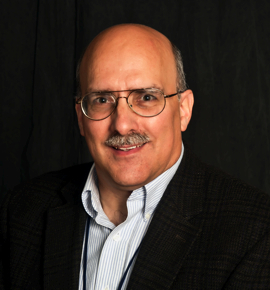Sabbagh Runs KSTAR Experiment
 Steve Sabbagh, APAM Adjunct Professor and Senior Research Scientist, and Dr. Young-Seok Park, an Associate Research Scientist in APAM, ran the KSTAR tokamak experiment MP2013-05-03-003 for two sessions this summer at the National Fusion Research Institute (NFRI) in Daejeon, South Korea. Their experiment addressed high normalized beta plasmas and studied several aspects of non-resonant n = 2 magnetic braking by neoclassical toroidal viscosity (NTV) in the device. Various magnetic field spectra were applied by utilizing the flexible capabilities allowed by KSTAR’s in-vessel control coils over pulse lengths (~ 10 seconds) much longer than the momentum confinement time (~ 100ms). Plasma collisionality was effectively changed by supersonic molecular beam injection of deuterium during the period of the applied = 2 field, and rotation profile control by the combined effect of 110 GHz second harmonic and 170 GHz third harmonic electron cyclotron heating in the plasma core, and n = 2 NTV was examined. Along with the strong effect of n = 2 NTV to reduce plasma rotation in KSTAR, the various combinations of rotation control tools stated above were also used to change the toroidal rotation profile shear. Columbia APAM experiments by S.A. Sabbagh, et al. on both the National Spherical Torus Experiment (NSTX) at Princeton and at KSTAR, have shown significant controlled modification of plasma rotation by non-resonant NTV in each device (~ 100% reduction in NSTX, ~ 50% reduction in KSTAR). As NSTX and KSTAR differ significantly in aspect ratio, comparison of KSTAR data to our NSTX data will provide important physics insight on the effect, and comparisons to NTV theory. (S.A. Sabbagh)
Steve Sabbagh, APAM Adjunct Professor and Senior Research Scientist, and Dr. Young-Seok Park, an Associate Research Scientist in APAM, ran the KSTAR tokamak experiment MP2013-05-03-003 for two sessions this summer at the National Fusion Research Institute (NFRI) in Daejeon, South Korea. Their experiment addressed high normalized beta plasmas and studied several aspects of non-resonant n = 2 magnetic braking by neoclassical toroidal viscosity (NTV) in the device. Various magnetic field spectra were applied by utilizing the flexible capabilities allowed by KSTAR’s in-vessel control coils over pulse lengths (~ 10 seconds) much longer than the momentum confinement time (~ 100ms). Plasma collisionality was effectively changed by supersonic molecular beam injection of deuterium during the period of the applied = 2 field, and rotation profile control by the combined effect of 110 GHz second harmonic and 170 GHz third harmonic electron cyclotron heating in the plasma core, and n = 2 NTV was examined. Along with the strong effect of n = 2 NTV to reduce plasma rotation in KSTAR, the various combinations of rotation control tools stated above were also used to change the toroidal rotation profile shear. Columbia APAM experiments by S.A. Sabbagh, et al. on both the National Spherical Torus Experiment (NSTX) at Princeton and at KSTAR, have shown significant controlled modification of plasma rotation by non-resonant NTV in each device (~ 100% reduction in NSTX, ~ 50% reduction in KSTAR). As NSTX and KSTAR differ significantly in aspect ratio, comparison of KSTAR data to our NSTX data will provide important physics insight on the effect, and comparisons to NTV theory. (S.A. Sabbagh)
